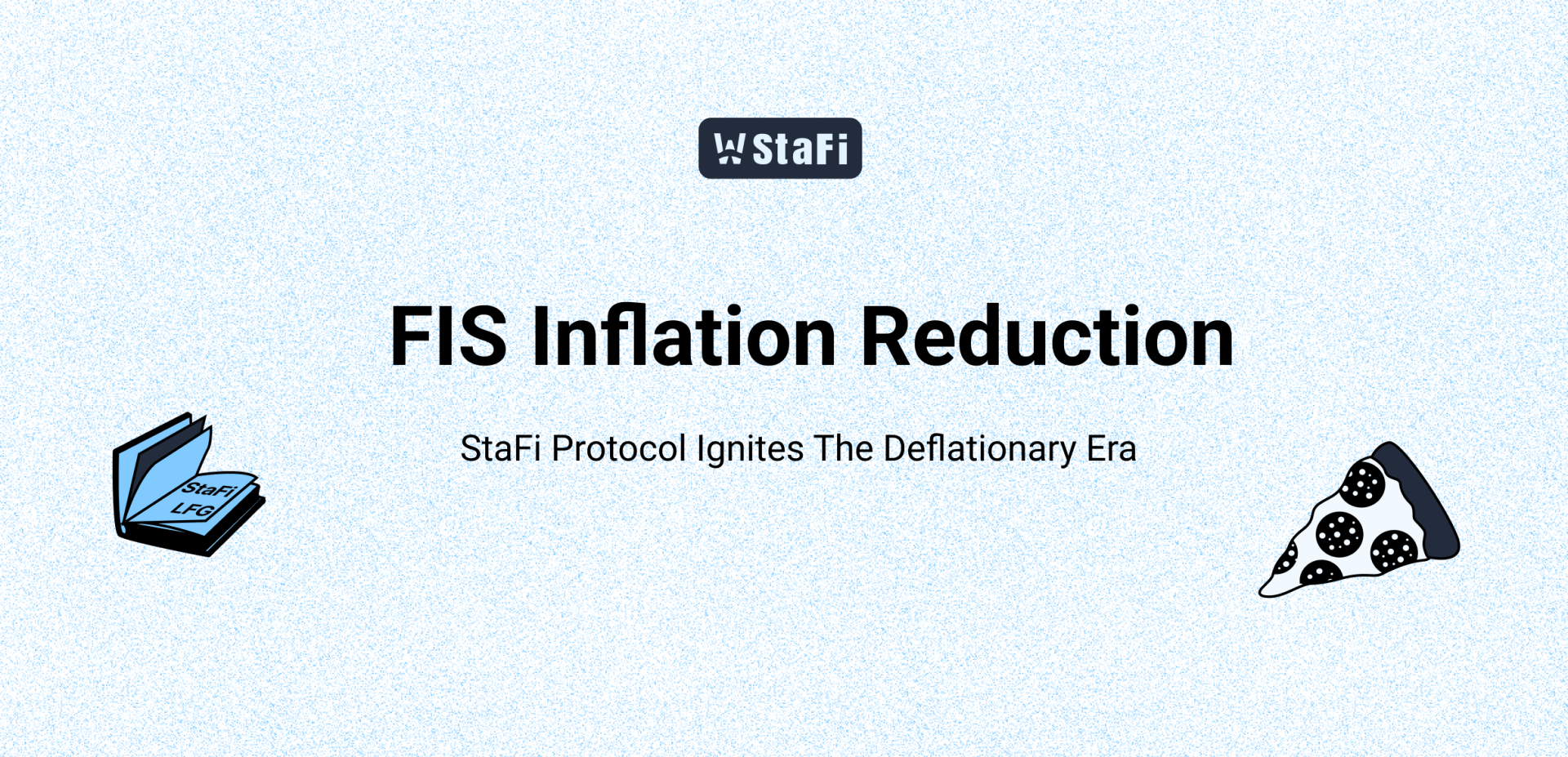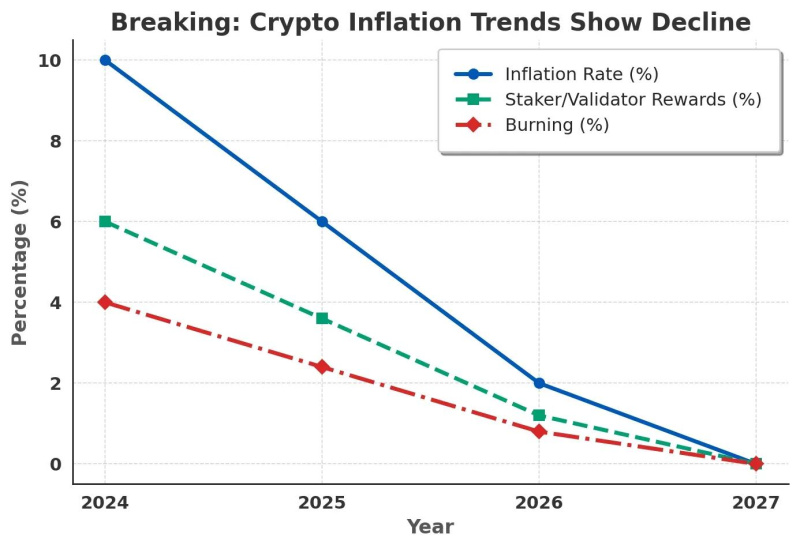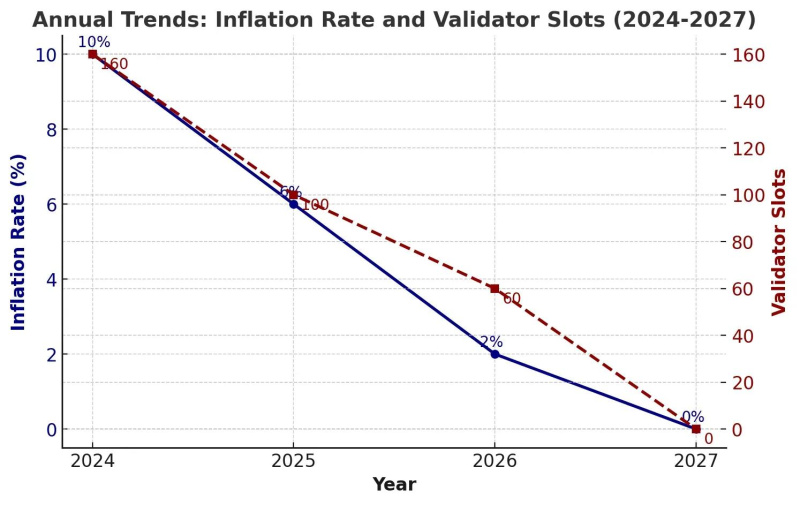
Singapore, Singapore, March 26th, 2025,
Chainwire
In 2024, StaFi introduced a burn mechanism as
part of its broader initiative to enhance the long-term
sustainability of the protocol. Building on this foundation, a new
proposal seeks to reduce the fixed inflation rate, aiming to
improve overall network stability. The proposal outlines a phased
approach to lowering FIS inflation, with the objective of aligning
StaFi's tokenomics with its transition toward an AI-powered Liquid
Staking as a Service (LSaaS) framework.
Inflation Reduction Plan
Under this proposal, StaFiChain’s current 10% inflation rate
will be reduced by 4% annually starting in 2025, gradually bringing
the inflation rate down to 6% in 2025, 2% in 2026, and ultimately
reaching 0% by 2027.
 This
gradual reduction ensures sufficient time for StaFiChain's appchain
ecosystem to adapt to LSaaS adoption, fostering a more diverse and
sustainable token economy. Additionally, it aligns with
StaFiChain’s rebranding efforts.
This
gradual reduction ensures sufficient time for StaFiChain's appchain
ecosystem to adapt to LSaaS adoption, fostering a more diverse and
sustainable token economy. Additionally, it aligns with
StaFiChain’s rebranding efforts.
Benefits
Reducing inflation results in lower token issuance, which
contributes to a more controlled token supply. This change aligns
with StaFi’s broader strategy to support long-term protocol
sustainability.
Implementation Strategy
Reducing inflation directly impacts validator rewards. With 160
active validators on StaFiChain, their payouts will decrease by
approximately 40% if this proposal is implemented. To maintain
security, the number of validator slots should be reduced in
alignment with the inflation reduction timeline.
 By
2027, StaFiChain will either be operated by a single foundation or
fully transitioned into an infrastructure model. At that stage, FIS
will migrate to an ERC-20 standard or other popular token standard,
unlocking new utilities for token holders.
By
2027, StaFiChain will either be operated by a single foundation or
fully transitioned into an infrastructure model. At that stage, FIS
will migrate to an ERC-20 standard or other popular token standard,
unlocking new utilities for token holders.
Key Objectives
This proposal not only reduces inflation but also accelerates
StaFi’s transition to an AI-powered LSaaS. StaFi must evolve to
remain competitive, requiring efforts in market education,
partnerships, technology upgrades, and industry alignment.
Revenue Generation
- TVL is no longer the primary focus; revenue is the key driver
for the company.
- LSaaS will generate revenue through a new
SubDAO working model.
- A detailed discussion on the DAO-SubDAO structure is
forthcoming.
Adoption & Developer Engagement
- LSaaS, as an infrastructure solution, requires active developer
engagement.
- The current market and developer community must be educated on
LSaaS benefits.
- StaFi must remain financially viable while navigating this
transition.
Future Roadmap
- Step 1: Burn Mechanism – Activated
- Step 2: Inflation Reduction – Pending Vote
- Step 3: FIS Value Enhancement – Coming Soon
The value-enhancement plan will be driven by the SubDAO model,
providing long-term benefits for FIS holders. Users can stay tuned
for more details at StaFi's X.
Outlook and Strategic Direction
The current market remains volatile, with liquidity patterns
continuing to fluctuate. Amid these conditions, StaFi maintains its
strategic focus on evolving into a sustainable AI-powered Liquid
Staking as a Service (LSaaS) ecosystem, prioritizing long-term
infrastructure development and protocol resilience.
About StaFi Protocol
StaFi is a leading Liquid Staking
infrastructure provider and protocol for PoS chains. Its Liquid
Staking as a Service (LSaaS) framework enables developers to create
Liquid Staking Tokens (LSTs) and Liquid Re-staking Tokens (LRTs)
across ecosystems like ETH, EVM, BTC, CosmWasm, and SOL.
By issuing rTokens (e.g., rETH, rBNB), StaFi unlocks the
liquidity of staked assets, allowing users to earn staking rewards
while retaining the flexibility to engage in DeFi. With support for
major blockchains such as Ethereum, Solana, Polygon, BNB Chain, and
Cosmos, StaFi bridges liquidity and security in Proof-of-Stake
networks.
Users can read more about
StaFi 2.0.
Website | rToken App |
LSaaS | X
| Telegram | Discord | Medium | Forum | Mirror
Contact
BD @StaFi
Protocol
Weymi
StaFi
Protocol
weymi@stafi.io